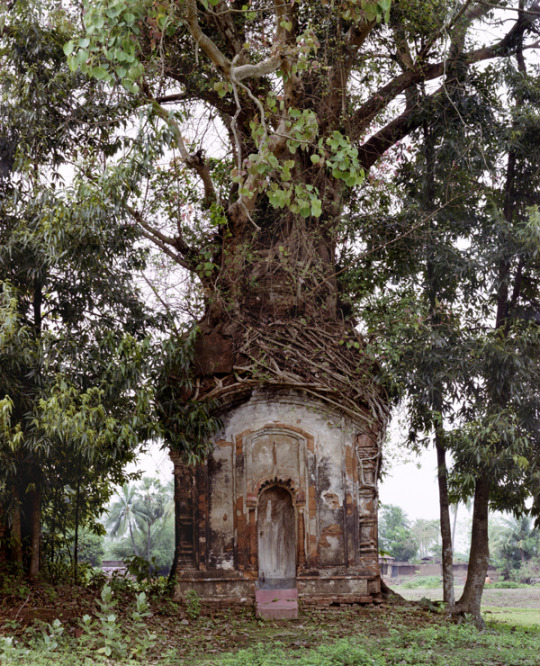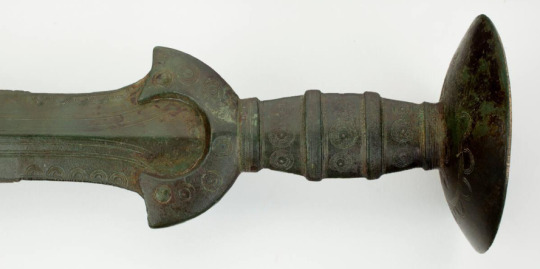"History is the discovering of the constant and universal principles of human nature" - David Hume
Don't wanna be here? Send us removal request.
Photo

Pañamarca has impressive ruins from the Moche culture, which flourished on the northwest coast of Peru between 200 CE and 900 CE. Amazingly, many murals in Pañamarca still retain their colors, over 1,000 years after the last painter laid down his brush. The site was deliberately buried sometime around 750 CE. And in doing so, the Moche unintentionally preserved their art for future archaeologists to discover.
This mural is on one of the pillars of the imaginatively named “Temple of the Painted Pillars.” The figures hold typical Moche objects, including a plate with three purple goblets, a multicolored stirrup-spout bottle, and a feather fan.
543 notes
·
View notes
Text

Marble head of Emperor Augustus, Louvre Abu Dhabi.
375 notes
·
View notes
Photo

Banyan Tree with an attached 16th Century Terracotta Temple, Antpur, West Bengal, India
photo by Laura McPhee
14K notes
·
View notes
Text

Canopic Jars of Isetemkheb D, Chief of the Harem of Amun-Re
Third Intermediate Period, 21st Dynasty, ca. 1077-943 BC.
Now in the Hurghada Museum. JE 26254
2K notes
·
View notes
Text


Tethys
A gold medallion featuring a high-relief depiction of Tethys seated on a seahorse amid stylised waves, ca.300/200 BC., 7x6.5 cm, weight 25 gr
Private Collection
1K notes
·
View notes
Text
Byzantine manuscripts of Herodotus' Histories

Picture of a page of a byzantine manuscript of Herodotus' Histories with marginal annotations (marginalia).
Source: https://humanities.princeton.edu/event/how-did-byzantines-read-herodotus-the-case-of-marginalia-in-verse/
110 notes
·
View notes
Text

Kees Scherer - Temple of Nefertari at Abu Simbel, Egypt, 1965-1968
14K notes
·
View notes
Text
Julius Caesar: The Ides of March are come.
Soothsayer: Aye, Caesar, but not gone.
- Shakespeare, Julius Caesar, Act III, Scene I
4K notes
·
View notes
Text


Bronze sword, Urnfield Culture, Central Europe, 1000 - 800 BC
from The Worchester Art Museum
1K notes
·
View notes
Text
From the Gladiators' Barracks in Pompeii



Photos by Mary Harrsch
2K notes
·
View notes
Photo

Wall relief of Ramses III and baboons, mortuary temple of Ramses III, Medinet Habu, Theban Necropolis, Egypt.
Photo courtesy & taken by Rémih
585 notes
·
View notes
Text

Bronze sword with ivory hilt, Minoan, 1400-1300 BC
from The Heraklion Archaeological Museum, Crete
667 notes
·
View notes
Text

Clay loom weight decorated with an owl, Greek, 5th Century BCE
From the Acropolis Museum
6K notes
·
View notes
Photo

The Lady of Elche, sometimes interpreted as an Atlantean priestess, is also believed to be related to the Carthaginian goddess Tanit. Greco-Iberian bust from Alicante (αρχαία Ελίκη), Spain, c.400-350 BC.
5K notes
·
View notes
Text

Golden cup from a LH IIA Mycenaean grave at Vapheio, one of a pair known as the "Vapheio Cups". This cup is believed to be of Minoan manufacture while its twin is thought to be Mycenaean. National Archaeological Museum, Athens.
548 notes
·
View notes
Text

The Chauvet cave, France, the art of prehistory. Under the ground of the Ardèche region, an invaluable treasure is hidden for its antiquity, its conservation and the pictorial quality of the representations; one of the oldest and most splendid examples of Arieñaciense parietal art, dating approx. between 40,000 and 30,000 B.C.n
549 notes
·
View notes
Text

Artemis
Artemis of Ephesus (so-called Great Artemis), Roman copy ca. 98/117 of a wooden statue of the 7th cent. BCE., marble, 292 cm
Selçuk, Ephesus Museum (Selçuk, Efes Müzesi) Inv.712 (x)
166 notes
·
View notes